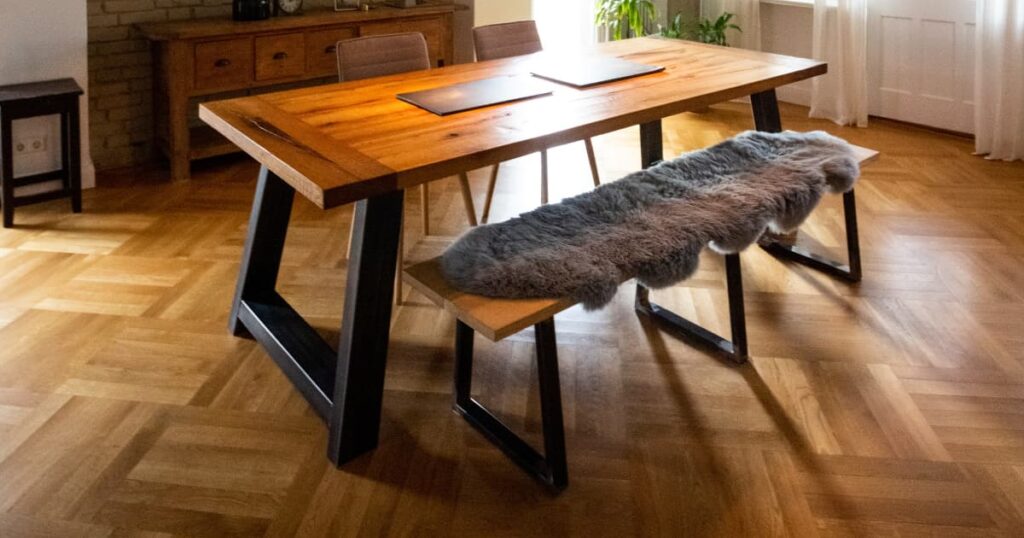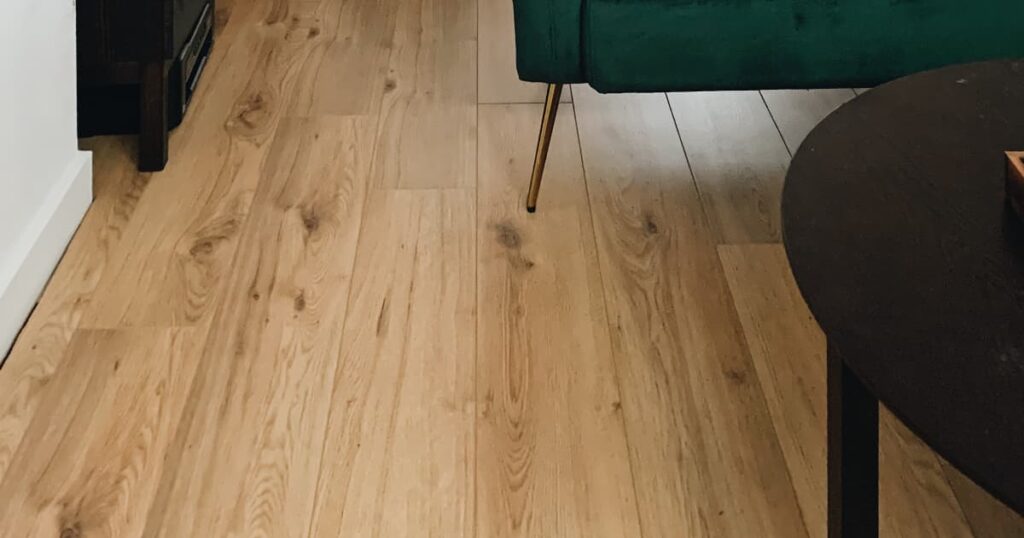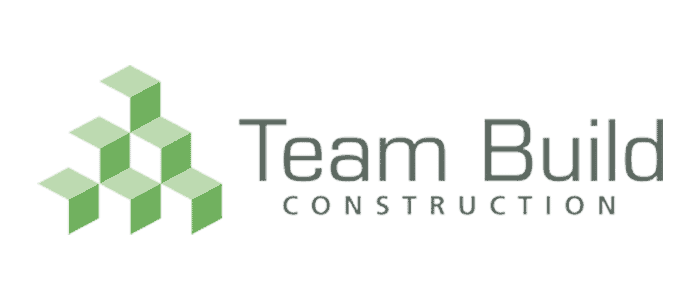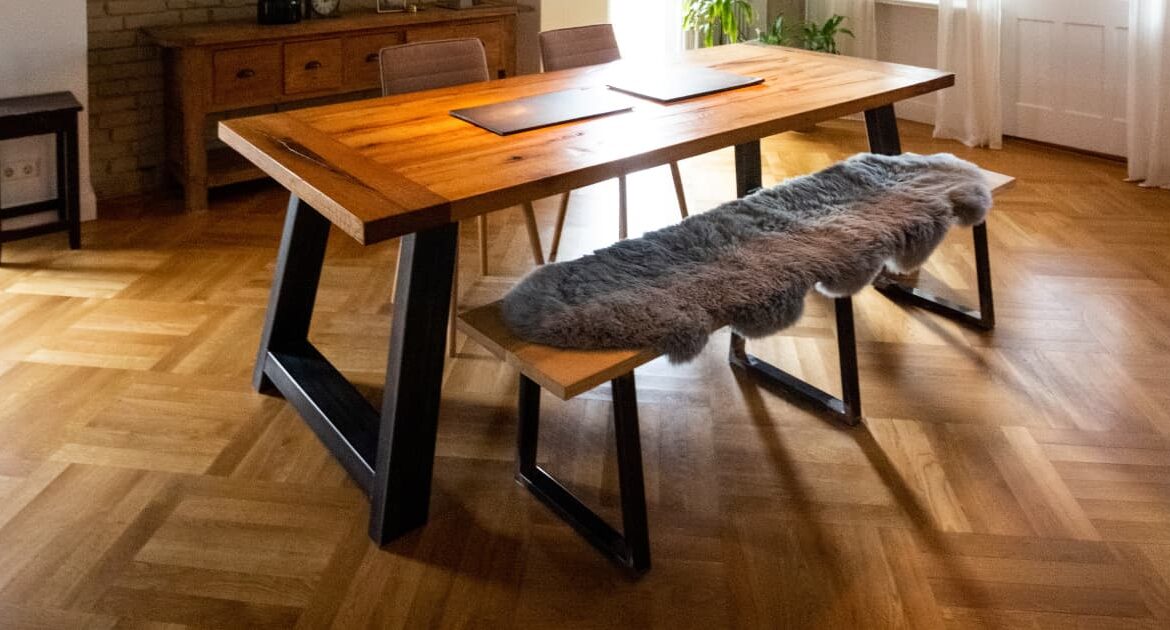
Wood flooring is regarded as a valuable asset in any home – elevating the aesthetic, adding to the property value, and presenting a versatile but functional finish which can be softened with rugs or kept natural for a rustic vibe.
But when it comes to laying and maintaining a wooden floor, many homeowners are unaware of the upkeep requirements – specifically the need to waterproof your wooden floor, to ensure it does not become subject to warping and expansion when exposed to water.
In this guide, we’re sharing some of the top advice from Team Build Flooring regarding waterproofing and protecting your wood flooring – both now and in the long run.
Why you need to waterproof a wooden floor
Hardwood floor materials come directly from trees – and as we all know, trees definitely grow outside and are regularly exposed to all the elements, including water. So, how is it that hardwood floors require waterproofing when the very material itself is grown in wet environments?
Well, while wood flooring is able to withstand the odd droplet of water or minor spillage, exposure to too much water can cause the wood to swell, warp, and bloat. And in the case of flooring, this can lead to some serious structural instability and health and safety risks. In addition, wet wood can quickly grow mould and can start to rot away if it is not thoroughly dried – ultimately requiring a complete replacement in many cases.
With all that in mind, it’s safe to say that protecting your wood flooring from such damage is definitely the best course of action. But before we get into the process of waterproofing your floor, what’s the difference between waterproof and water-resistant wood flooring?
The difference between waterproof and water-resistant wood flooring

Most wood flooring that has some kind of finish on it, be it a lacquer or a coat of varnish, is water-resistant to some extent, provided you mop up any spillages or pools of water within a few minutes and before it can soak into the wood. To be fully waterproof, flooring tends to be made from a more complex material than simple hardwood planks – with flooring manufacturers working to integrate a core layer of stone polymer composite or similar into the structure of the floor to protect its structure and stability.
Generally, we recommend that where possible homeowners look to install these advanced types of wood flooring, with a layer of sealant atop the floor then helping it to resist water infiltration and prevent further signs of wear and tear. While this does inevitably drive the cost upwards, these steps will help to ensure that your wooden floor remains a versatile, attractive, high value addition to your home for years to come.
The process of waterproofing your wooden floor
Before waterproofing, clear your floor completely and clean it – taking the time to repair and fix any signs of damage before adding the waterproof layer which will seal your floor.
Once you’ve done this and are left with a clean wooden floor, you need to sand the top surface. This is important because it creates a base on which your waterproofing product can sit – and is an integral part of the process whether you’re treating the engineered waterproof flooring structure mentioned above or more simple hardwood planks.
Once this is done, it’s time to add the waterproof solution which serves to seal the surface of the wood and add to its natural water resistance. You will likely find that you need a few layers of the solution to achieve an optimum finish and should let each layer dry before adding a new one. This will allow you to spot and brush away any imperfections as you work.
Another piece of advice: work from the inside out, always starting with the centre or the far side of the room and working your way towards the door. This will help to ensure you don’t step on or scuff any newly treated floor, instead giving it time to dry thoroughly.
In conclusion
The difference between waterproofing and water-resistant flooring lies not only in how you treat the wood surface but in the material that you use to lay your floor. While the innovative new wood planks with the built-in core alleviate the risk of warping and bloating from excess water soaking into the wood, a few coats of waterproofing solution atop your wooden floor will help to protect them from lasting damage as a result of spillages and cleaning processes.
For more on this, to determine which type of wood flooring and treatment process is best for your home and budget, and for advice on how to conduct the best waterproofing project on your floors, reach out to our team today.

